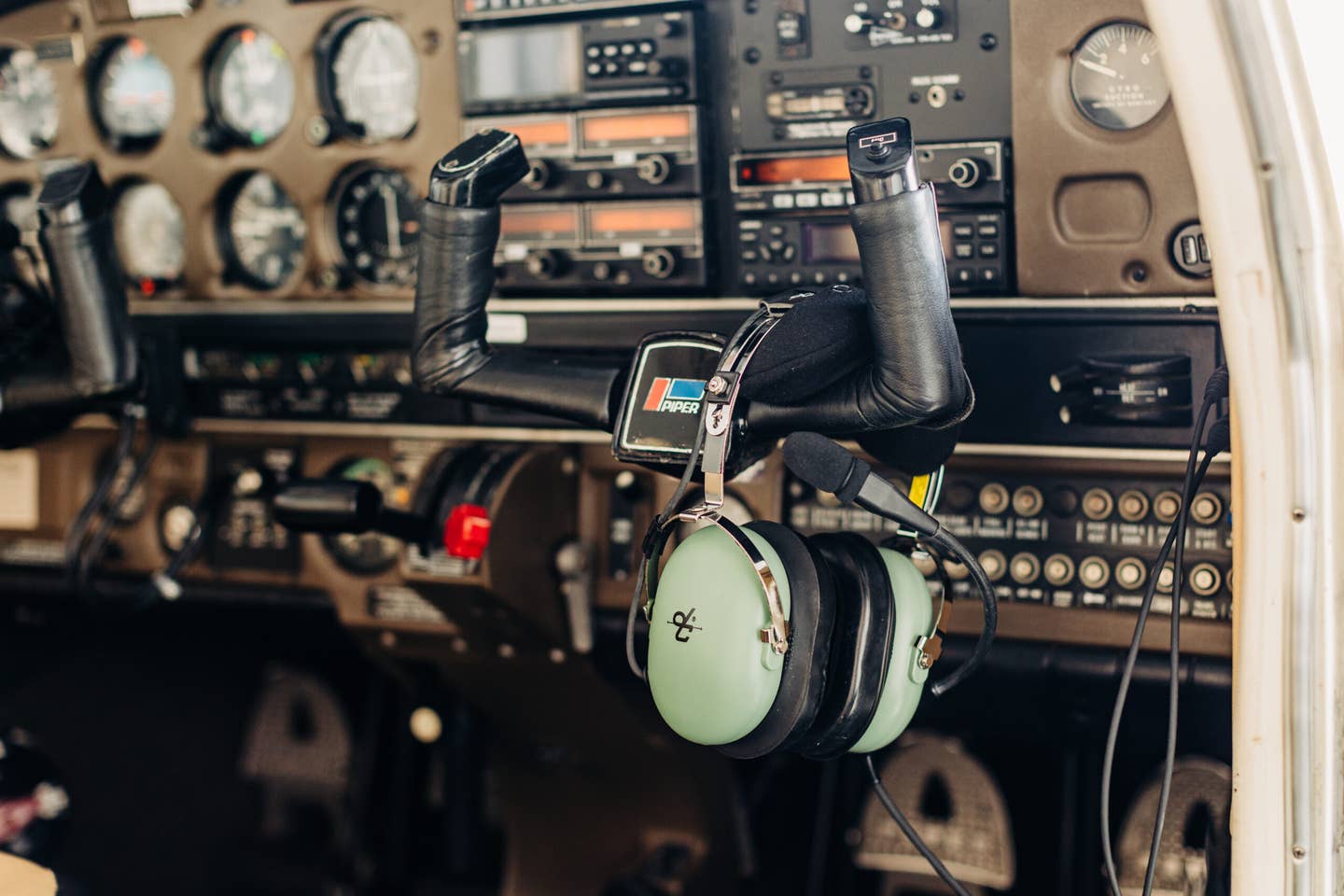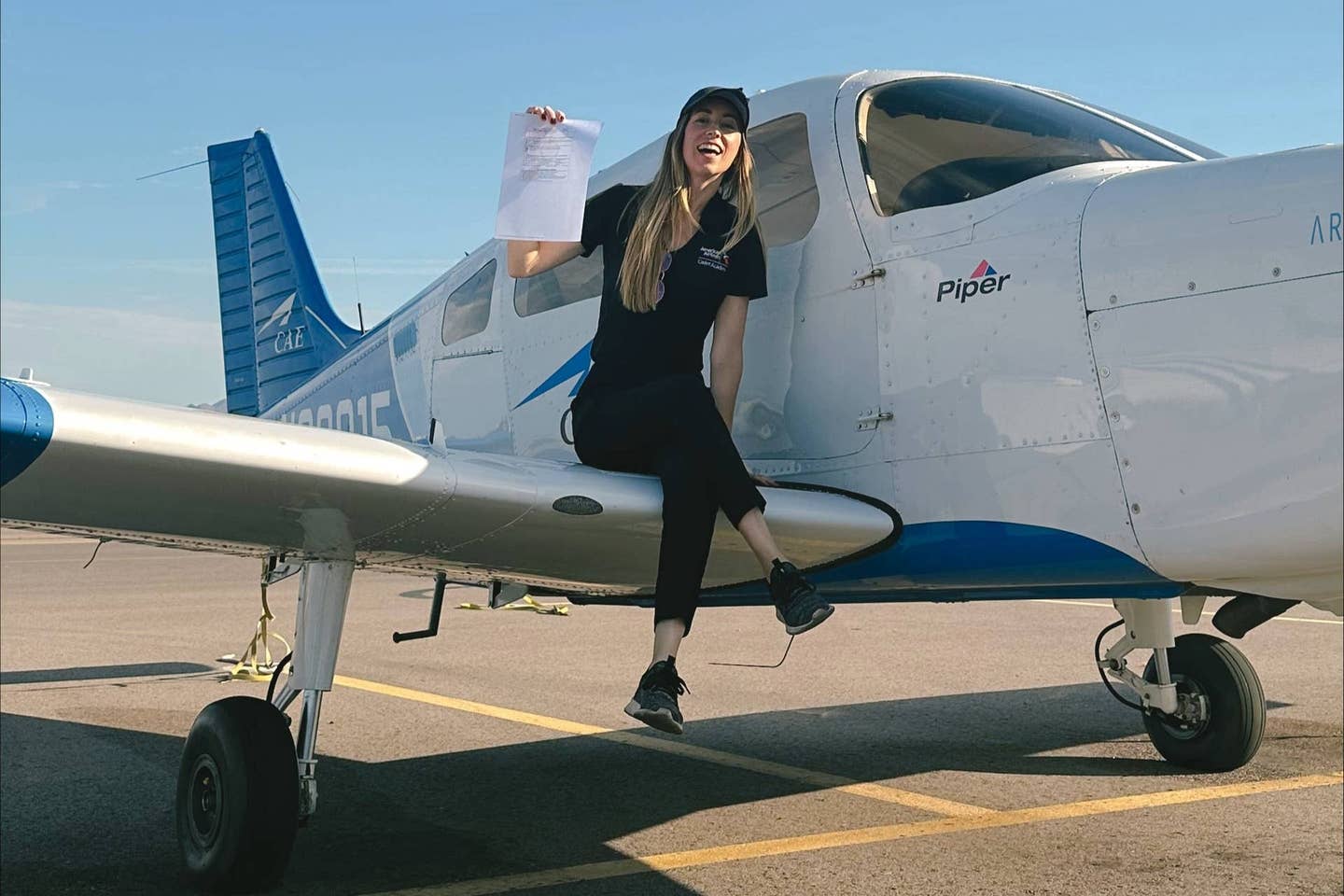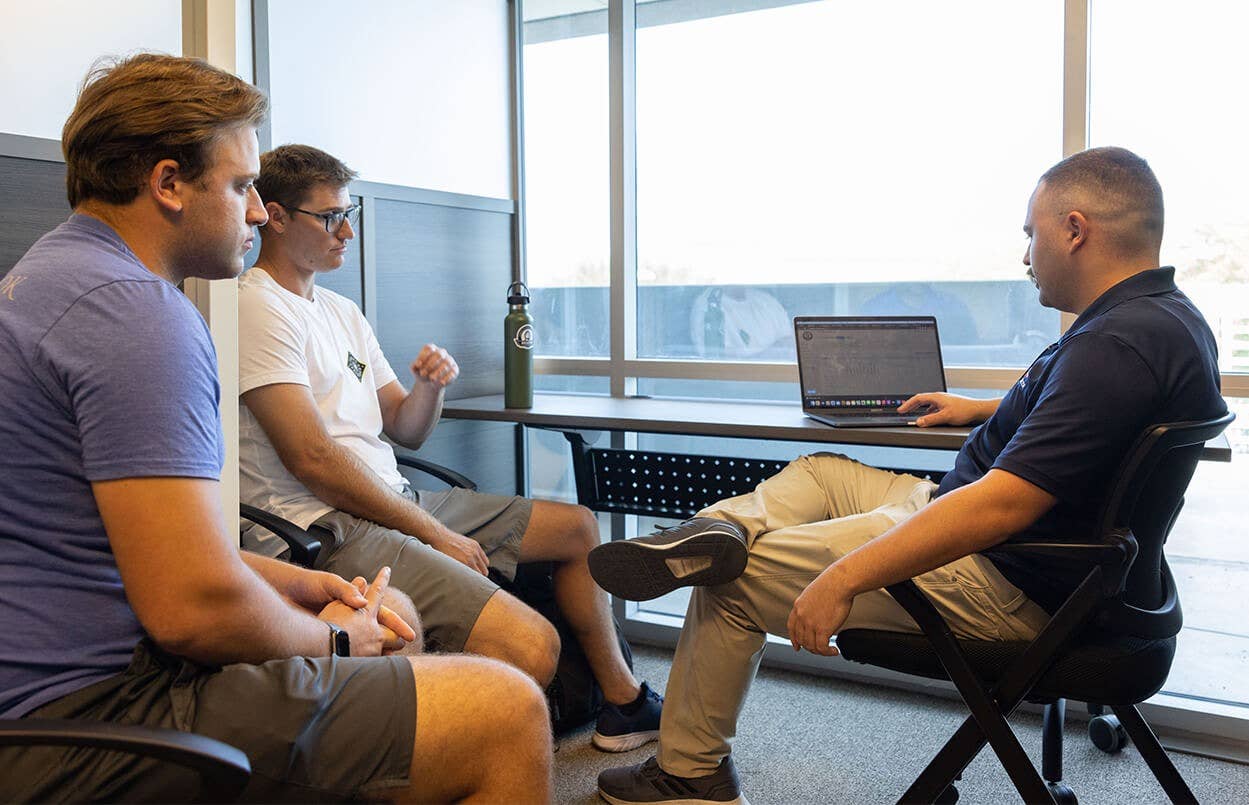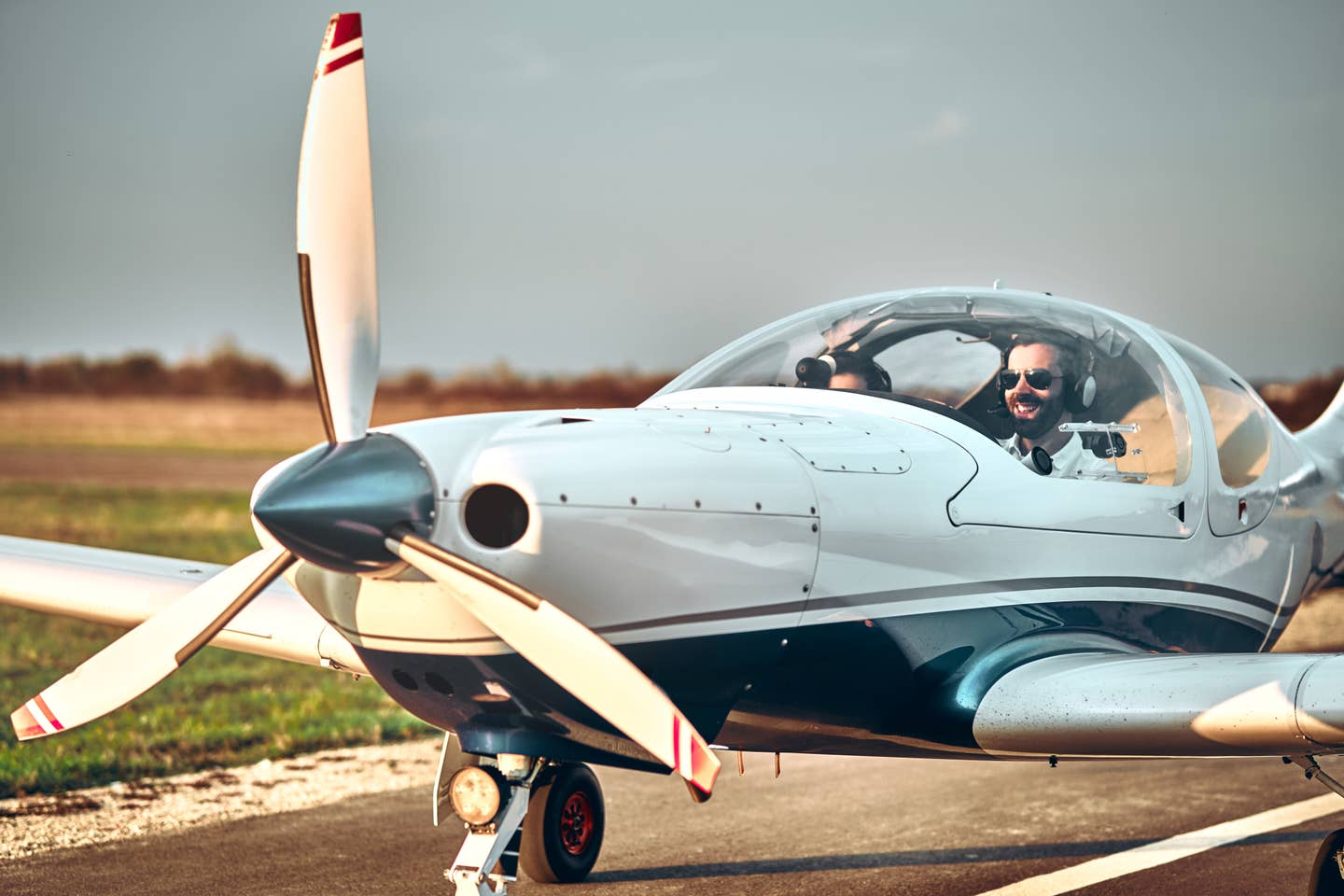
[Shutterstock]
Whether you’re a student pilot chasing that first certificate or a seasoned aviator craving something with better performance, figuring out the "best" personal aircraft for you is all about determining the right fit for your mission. Let’s take a look at some of the great personal aircraft out there to help get an idea of what might be a perfect match for you.
Training and Time Builders
Cessna 150
Let’s start at the beginning with good trainer aircraft that can still be useful beyond your days in flight school. No matter your longer range goals, it is usually a good idea to start with something that is relatively simple, fun, and reasonably affordable. Well maintained two-seaters immediately spring to mind as perhaps the most cost-effective options—the Cessna 150 being chief among these.
Though discontinued in 1977, the Cessna 150 still remains one of the more common small single engines buzzing around the skies. This was the first plane I trained in—a little yellow 150 affectionately known around the flight school as “Tweety Bird.”
Cessna produced the all-metal, high-wing two-seater in several varieties over its 19-year production run, including a Standard, Trainer, Commuter, and Patroller model. All used a 100 hp Continental O-200-A engine, although Cessna later upgraded the 150’s successor, the 152, to a slightly more powerful 110 hp Lycoming O-235-L2C. The company continued producing the 152 from 1977-85.
Their forgiving yet responsive flight characteristics make them fun to fly, while their ability to sip somewhere around 4-6 gph make them affordable trainers and great time-building platforms.
The downside? Two average-sized adults might struggle to fly within the little airplane’s weight and balance limitations with full-fuel onboard. If you plan to use the 150 for training or time building, just be sure to do your homework and check that you and your instructor or time-building buddies will actually fit.
Although prices have gone up in recent years, the Cessna 150 and 152 remain fairly inexpensive options and, given their popularity and simplicity, can be relatively easy to maintain. Inexpensive, reasonably well-equipped options can be had for around $35,000, although it is not uncommon to see nicer examples, perhaps IFR-certified with updated panels and a low-time engine, priced closer to $50,000-$60,000 or more.
Cessna 172
Continuing down the path of Cessna trainers, the Cessna 172 is the world’s most produced aircraft, first entering production in 1956. Although Cessna paused production between 1986-96, the 172 remains in production. Comparable in many ways to the 150, 172s of the same era were very much the 150’s four-seater big brother.
Given the model’s long history, there are more variants than we can realistically cover, and the same can be said of the aircraft’s engine options. Suffice it to say, Cessna has offered the 172 with a variety of Continental and Lycoming engines with horsepower ranging from the mid-to-high 100s. Most models will see fuel burn somewhere in the 7-10 gph range which, while somewhat higher than that of a 150, is a trade-off in favor of higher cruise speeds and payloads.
This means that in virtually all circumstances, two adults can fly with unused weight to spare. Pilots weighing around or over 200 pounds who want to find an airplane for flight training will probably do better with a 172 than with a 150 for this reason. Beyond that, though, the 172, while not exactly a speed demon or cargo master, still makes for a reasonably fast and capable airplane for the hobbyist or time builder.
A brand-new 172 will start at around $450,000, but older models with reasonably low time can usually be found at a bit over $100,000, although prices range significantly.
Piper PA-28
Not to leave the other option most commonly seen at flight schools out of the conversation, the PA-28 series is very much Piper’s low-wing equivalent of the 172. The four-seater with tricycle gear has been in production since 1961 and, like the 172, comes in many variant flavors. Available engines range from 140-300 hp, including some with turbocharging and even retractable gear. To be fair the 172RG has retractable gear too, although Cessna generally leaves higher horsepower up to other models in their lineup.
Newer models cost upwards of $400,000 if purchased new, though older models can be found in the mid-to-high five figures.
Quick Single Engines
Simple trainers are good options for student pilots, time builders, and hobbyists, but likely won’t cut it for those with places to be or, perhaps, a touch more payload to carry. Pilots who regularly need to fly longer distances and whose mission is to save travel time will benefit from more horsepower.
Cessna 182
Especially since so many pilots train in Cessna 172s and 150s, the Cessna 182 is a natural “step up.” Introduced around the same time as its little siblings, the 182 has been in production since 1956 and is Cessna’s second most successful model.
Variations of the 182 over its history run the gamut, including turbocharged and nonturbocharged options, a retractable gear option offered from 1978-86, and a wide range of engines primarily from Lycoming and Continental. Current models produce a top cruise speed of 145 ktas and a maximum range of 915 nm. A new turbocharged model starts at around $760,000.
Again, given the model’s long production run and wide variety of offerings over the years, prices on the used market vary wildly, but you might expect to pay somewhere between $185,000 and $400,000.
It is probably worth giving a shout out here as well to the Piper PA-28’s higher-powered variants, as well as to the six-seat PA-32, sometimes called the Cherokee Six. Like the 182, these are natural step-up airplanes for those who did their initial training on Piper airframes.
Beechcraft Bonanza
The Beechcraft Bonanza has a long history dating back to the start of its ongoing production run in 1947. Although the earliest models were built with horsepower in the high 100s, most Bonanzas offer Continental engines with horsepower in the mid-200s to the low 300s. A current production G36 offers seating for six with a top cruise speed of 174 ktas and a maximum range of 920 miles, starting at more than $1 million.
As in other cases, given the Bonanza’s long history and wide range of variants, used prices vary drastically, but generally buyers might expect to pay something like $250,000-$500,000, depending on factors like the specific variant, age, and condition.
Cirrus SR22
Speed and features seem to be the name of the game with Cirrus, and the Cirrus SR22 offers both. The company’s current SR22T (turbo), for instance, offers buyers 315 hp that translates into a top cruise speed of 213 ktas and a max range of 1,021 miles for around $1.3 million. Used examples of the standard (non-turbo) SR22 can be had for around $250,000-$450,000, while used turbo models may run closer to $700,000-$900,000.
These come with unique features like Cirrus’ famed CAPS airframe parachute system, as well as modern glass avionics and amenities like air conditioning, keyless baggage door, USB-C ports, built-in oxygen systems, and more.
Fun Options
Of course, there are those who are not necessarily concerned solely with getting from point to point quickly but who are also not content to stick with a trainer aircraft forever. This crowd may benefit from some of the more “purpose-built” fun aircraft on the market. Whether looking for the chance to fly an aircraft you construct yourself, fly into unimproved backcountry airstrips, enter the world of aerobatics, or simply fly low and slow in an affordable classic, there are plenty of great options available.
CubCrafters
CubCrafters offers both certified, factory-built, and experimental kit options that are rugged and, well, a heck of a lot of fun. Among the several available models, buyers will find an assortment of light (including light sport options), well powered STOL taildraggers suited for missions of the adventurous variety. Current engine options range from 160 hp to 215 hp, and for those who want to construct their new plane with a little help, CubCrafters offers builder-assist programs that get you finished up in as few as seven working days.
Pricing varies given the differences between buying a finished aircraft from the factory versus building it yourself or with factory assistance, but those picking up a new airplane from CubCrafters can expect to pay somewhere between $250,000 and a bit over $400,000.
Van’s RV-8
Van’s Aircraft’s RV-8 is another fun option for the pure homebuilder. The two-seater tandem kit plane has been in the skies since 1995 and can be found with either conventional or tricycle gear. It can be configured with engines offering between 150 hp and 210 hp and, best of all, the RV-8 is a fully aerobatic-capable aircraft.
With a top speed of 220 mph and a ceiling of more than 21,000 feet, this sporty kit comes in its standard form for just under $48,000, or as a quick-build version for just over $71,000. If you’d rather buy a used-but-complete model, it generally runs in the low-to-mid 100,000s.
Aeronca Champ
Flying fast and furious isn’t for everyone and, of course, not everyone has $100,000 or more handy to drop on something that amounts to a toy airplane. If either of those statements describes you, fret not. There’s a great deal of fun to be had on the cheap in a low-and-slow taildragging classic like the Aeronca Champ.
Mostly produced in the years immediately following World War II, buyers can pick one up for around $25,000-$35,000. Though typically sparsely equipped and not exactly a firebreather, with early models fitted with a meager 65 hp Continental A-65-8 engine, there’s no denying that the 7AC Champion is a blast to take out for a sunny day of grass field landings.
Whether it's simplicity, speed, or backcountry capabilities you're looking for, the "best" airplane for you is all about your mission. With that in mind, strap in, take off, and discover the freedom of having your own wings.
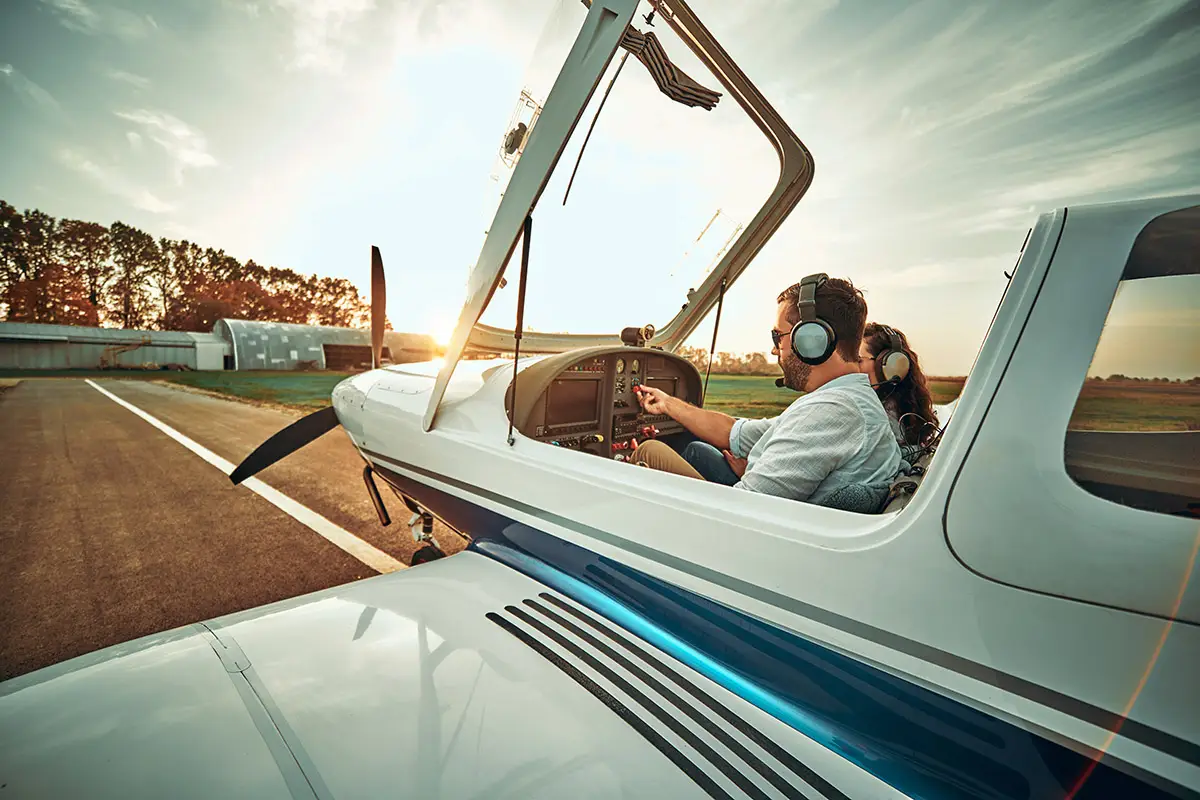
Sign-up for newsletters & special offers!
Get the latest FLYING stories & special offers delivered directly to your inbox



